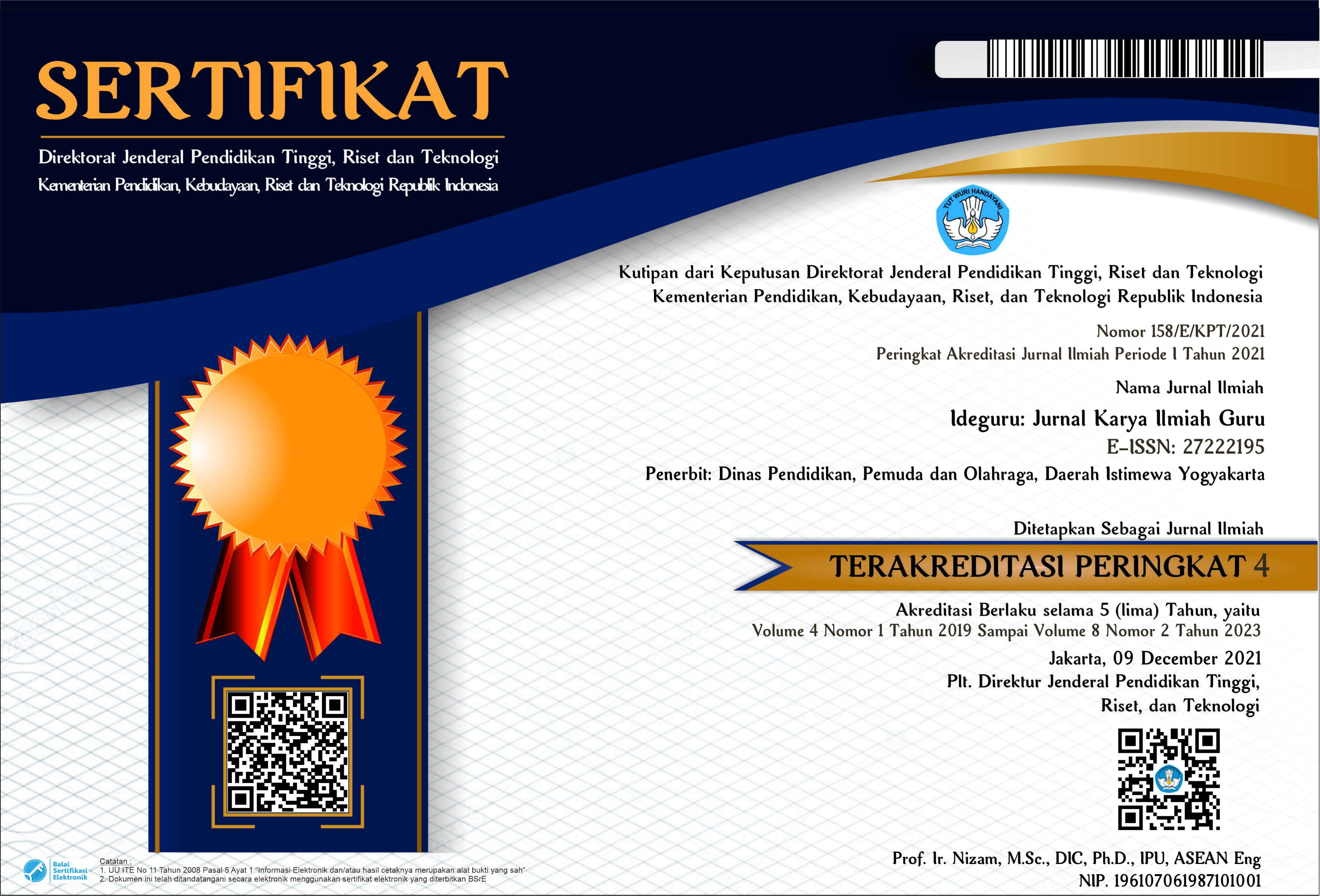THE IMPROVEMENT OF STUDENTS’ LEARNING ACTIVENESS AND LEARNING OUTCOMES ON OXIDATION REDUCTION CONCEPT THROUGH STAD LEARNING MODEL
Abstract
The purpose of this study (1) to find out how the application of the Student Teams Achivement Division (STAD) learning model can increase students’ learning activities/activeness; (2) to determine the improvement of students’ learning activities/activeness using the STAD type cooperative learning model; (3) to know the learning outcomes of oxidation reduction concept by using the STAD type cooperative learning model. The research was conducted in class X MIPA 2 at SMA N 1 Banguntapan even semester of 2019/2020 academic year. This study is a classroom action research. The cycles consist of cycle I and cycle II. Each cycle went through the stages of planning, implementing, observing, and reflecting. At the end of the cycle a non-test was conducted in the form of a questionnaire to measure the students’ activities/activeness and a test to measure the students learning outcomes. The result showed (1) the application of the STAD learning model, namely the phase 1 to phase 6 of the concept of redox definition, the determination of good category oxidations stated (77.5%) in cycle I and the concept of oxidizing reducing agents, disproportionation and conception reactions were very good (87.5%) in cycle II. (2) The application of the STAD learning model of oxidation reduction could increase the students’ activities/activeness by 60.51%, the category was quite active in the first cycle to 75.31% the active category in the second cycle. (3) The application of the STAD learning model for oxidation reduction concept could improve the learning outcomes of Chemistry of grade X MIPA students at SMA N 1 Banguntapan by 64% in cycle I, increasing to 78% in cycle II.
PDF Downloads
Copyright (c) 2020 Dian Sri Suhesti

This work is licensed under a Creative Commons Attribution 4.0 International License.

 DOI:
DOI:














